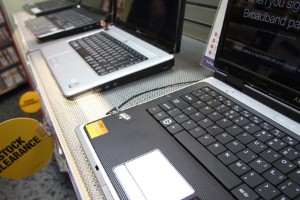
Mind the gap: How to fill scratches in computer screens
By admin on October 24, 2011
Anyone that has owned a laptop for an extended period of time knows that scratches appearing on the screen are inevitable. Some scratches can probably be lived with, but others obstruct the screen so badly that a repair must be initiated.
If the problem is serious, a laptop repair professional can help a computer user replace an entire screen or internal components of the screen. But in occurrences involving minor scratches, a do-it-yourself fix may suffice.
Believe it or not, toothpaste can be used to patch some screen scratches. Actual toothpaste, not gel or paste-mouthwash hybrids, must be used. Users should gently massage the paste into the scratch with their fingers using a circular motion. If done properly, the paste should adhere to the scratch and polish it away. Then, use a soft cloth to remove excess paste from the screen. Finally, use glass cleaner or a special screen cleaner to remove any additional residue.
Petroleum jelly can also be applied in a similar manner, although it may need to be reapplied if a user happens to rub his or her screen and removes it from the scratch. While toothpaste is an abrasive that pares down a scratch, petroleum jelly fills the scratch because it closely matches the optical density of the LCD display.
Users who own older CRT display computer monitors (i.e. large, thick monitors with a more glass-like screen) need to employ different methods to fix their screens due to the physical makeup of those screens. An epoxy resin should be applied so scratches in these screens, as it more closely resembles the chemical makeup of the screen than does toothpaste or petroleum jelly.
A Virginia laptop repair location with experience fixing monitors can advise computer users on do-it-yourself techniques to fixing screens.
For a Free Computer Repair Quote Call (202) 670-9966
Related Laptop Repair Articles
Help! My laptop sounds like a lawnmowerMy Laptop Screen is Black!
Understanding hibernate mode
Internet Connection Issues—Could It Be The Router?
How to safely clean a laptop’s registry



Leave a Reply